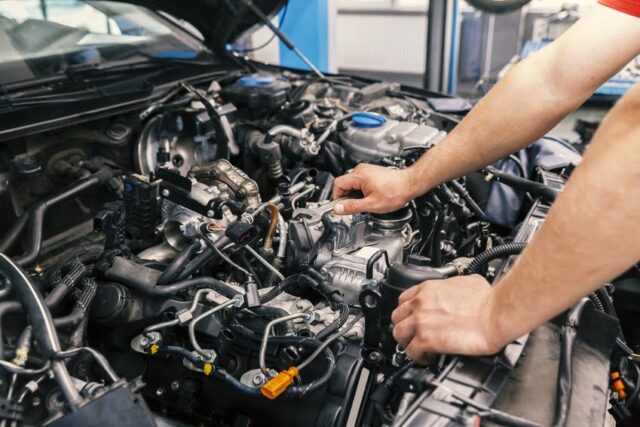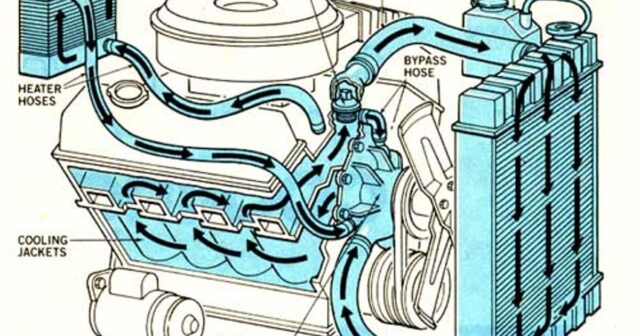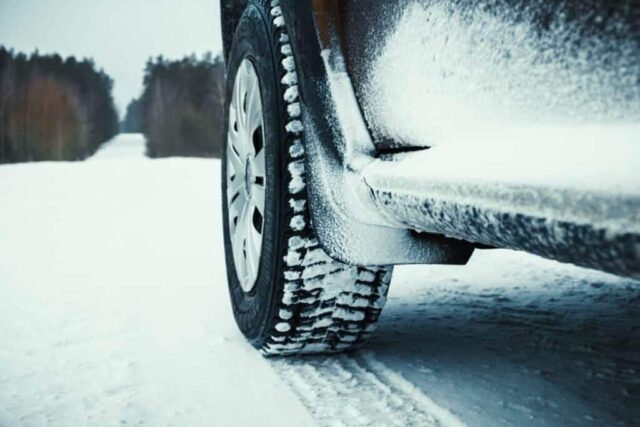
With the onset of winter, motorists are faced with a number of difficulties associated with car care. Rapid temperature changes, high humidity, and slippery road surfaces are extreme conditions for driving. To keep the car in good condition, you need to know the nuances of caring for it, especially if the automobile is without a garage during the winter.
Not only novice but also experienced drivers may overlook the importance of preparing a car for frost, which may lead to the need for car services in the future. It’s not just about changing summer tires to winter ones and cleaning ice off the exterior. A driver shouldn’t forget about the engine, brakes, and other key details to keep their car well maintained in the winter. Let’s review some important recommendations on how to care for your vehicle properly during the frosty and snowy weather.
How to Protect Car’s Engine During the Winter

Car motor operation in the winter requires compliance with a number of recommendations, as follows:
Vehicle engine faces enormous strain during frosts and snow driving. After all, it can cool down to -4 °F (-20 °C) at night, and it heats up to 240 °F (+115 °C) after starting. Therefore, in winter, many professionals recommend preheating the engine for 10 minutes. This will ensure smooth and correct operation. If you don’t have the opportunity to wait and need to urgently leave, drive the same 10 minutes at a low speed, then return to normal speed.
It’s especially worth considering the conditions if you have a diesel engine. Remember, when using summer diesel fuel in winter, its composition changes. It becomes cloudy at 23 °F (-5 °C) and solidifies completely at 14 °F (-10 °C). There is a special means on sale for starting the engine in cold weather, particularly various anti-gels. Different additives and chemical compositions will help to start the car faster and more efficiently.
Experienced drivers understand the features when it comes to the operation of a diesel or gasoline engine in the winter. The second one warms better and doesn’t usually require seasonal fuel changes. However, it’s better to consider the availability of basic auto chemicals for the winter in order to be able to quickly move from a place.
You can also insulate the engine for the winter with an auto blanket or corrugated insulation when the car is off. However, at very low temperatures, this may not help. Therefore, the radiator is often insulated instead. You can carry out this procedure yourself. However, it’ll be more reliable if you contact the service station and get professional advice.
Don’t neglect these recommendations, because the correct operation of the car during the winter depends on them.
How About the Car Engine Cooling System?

The cooling system most typically refuses to work in the frosty season. Its components experience the greatest temperature changes, and therefore previously hidden problems, such as the development of fatigue cracks in pipes and leaky joints, appear.
Therefore, if the car isn’t new, has previous owners or bought on salvage car auction, we advise regularly inspecting the engine to detect fogging and obvious coolant leaks. An important indicator of the state of the system is the level of antifreeze. You can get an idea of the absence or presence of concerns by constantly monitoring it. The antifreeze itself, by the way, should be fresh and of high quality. The right coolant—above all, the product of a reputable manufacturer—prolongs the life of parts and reduces the likelihood of engine failure in the harsh winter season.
How to Protect Car’s Body During the Winter

Vehicle body care includes the following recommendations:
The most common problem is ice. During the night, the car can become covered with a thin layer of ice, which is almost impossible to remove without additional tools. Professionals don’t advise aggressively scraping it from the surface with a special tool. It’s best to start the engine and wait until the frost itself begins to melt. If you don’t have time for that, buy a glass defroster. It won’t leave scratches and will allow you to quickly remove the ice.
Many drivers panic and start to make an extra effort to open the door or try to warm them up with a lighter. Such attempts only lead to more issues. In this case, it’s always worth having a special defroster for locks on hand—a tool that won’t let you down and won’t spoil the car.
To prevent the freezing of doors after a car wash, dry the locks and seals. Don’t park the vehicle under windows or balconies where water may drip. Lubrication for seals will also help. This step will prevent the seal from freezing to the body even if moisture gets into the gap.
In winter, you don’t need to wash your car often. This is especially dangerous if the temperature falls below 14 °F (-10 °C). Paint and varnish materials on the body react to sudden changes in temperature, so corrosion spots can occur. It’s better to wash a car in extreme cases, when it’s really necessary. If not, try to avoid washing.
Throughout the winter, the car is somehow exposed to the aggressive effects of the ice fragments or sand and salt, which are sprinkled on the roads. The body cover is scratched, and the glossy sheen is gone. To avoid this, don’t use hard brushes for cleaning. Use a protective polish, which must be applied to the body surface at the beginning of winter before the onset of severe frosts.
In Conclusion
It’s extremely important to maintain your car properly during the winter. By paying close attention to the most vulnerable vehicle systems, you prolong their service life and save money.
The final piece of advice is to undergo vehicle check ups right before and after the winter to keep your car well maintained and to resolve all the technical issues up front. Besides all that, specialists from car service centers always provide you with some practical recommendations aligned with your specific automobile model.












